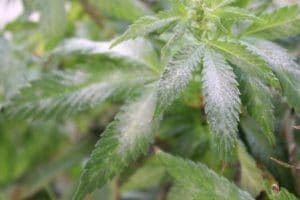Clone Problems: Understanding Hemp Clones and Avoiding the Pitfalls
More and more people across the country are getting excited about growing hemp. In response, retailers have begun offering all sorts of options to entice curious hobbyists and new farmers – things like auto flowering seeds and feminized clones.
Like most things in life, these options aren’t always perfect, especially since this industry is only beginning. Hemp clone technology is exciting, and yet there are a few things that can go wrong when growing with clones. Most of the pitfalls can be avoided by understanding how cloning works, and the unique characteristics of hemp clones.
Growing plants from seed is pretty straightforward. You plant the seed in the ground and it grows. Maybe germinate it in some paper towel to give it a little extra care. Make sure the budding plant has the three necessities: air, water, and light. Then before you know it, it’s harvest day. It might not be that simple but you know what we mean. Growing from clones requires a bit more care.
What are Hemp Clones?
Cloning is a modern method of hemp cultivation (no it’s nothing like the sci-fi movies!). Rather, the methods and the scale of hemp cloning is modern; people have been propagating plants from cuttings for millenia.
Clones are an exact genetic copy of the mother plant. They’re made by taking a cutting of a mother plant, and then caring for it until it develops roots and grows into a genetically identical plant. By identical, we really mean identical. The clone will have almost exactly the same cannabinoid and terpene profiles, as well as share the same resistance to pests and fungi. Cuttings can even be taken from clones to create successive generations.
Nature vs Nurture
Cultivators strive for genetic uniformity because a predictable plant allows you to create a predictable product, but uniformity can trigger a number of issues for growers. For example, if a pest or disease strikes a crop made up of genetics that aren’t resistant to that pest or disease, it’s likely that the entire crop would be affected, or even wiped out. However, hemp proves to be widely pest and disease tolerant so this issue shouldn’t cause much worry. BFF always suggests that hemp farmers have an adequate integrated pest management strategy, which provides another layer of protection besides the plants’ natural resilience.
We learned above that hemp clones can be re-cloned. Some cultivators claim that this practice causes clones to degrade over time, meaning that successive generations become less and less identical to the original mother plant. To put it frankly, they’re wrong. Some clones do tend to exhibit different traits over time, but this isn’t due to degradation or changes in genetic code. Rather, it’s an excellent example of how environmental factors modify a clone’s genetic potential and expression without actually changing the plant’s DNA, also known as epigenetics. In fact, even two clones from the same mother grown in different environments often look and grow differently.
Hemp clones have another sensitivity – their lack of tap roots. The process of cloning results in plants that have a network of shallow, lateral roots instead of the deep anchoring tap root of a plant grown from seed. Because of this, they can be more susceptible to wind damage and have a harder time absorbing nutrients in arid environments. However, these issues can be avoided by following best growing practices.
Mutation
Although studies regarding cannabis are still quite limited, research suggests that phenotypic or physical variations in plant cuttings appear because of mutations in the DNA sequence. Another theory, Muller’s ratchet, claims that clones are bound to accumulate a number of mutations which will ultimately hinder their ability to grow and thrive. Stay tuned for the results of further research. At Blue Forest Farms, we are deeply engaged in unlocking the mysteries of hemp genetics.
So What Can I Do?

Many of the issues that farmers see with clones can be traced to poor breeding practices. The first thing you should always do when seeking to purchase clones is ensure that they’re coming from a reputable breeder or retailer. As the financial promises of hemp grow, more and more frauds will enter the industry. In fact, a Minnesota farmer seeking to grow high CBD hemp purchased what he believed were four thousand feminized clones, only to realize that he had actually been sold unfeminized seedlings when they started to flower.
Once you’ve found a great retailer, it’s time to pick out your hemp clones. Be sure to select a variety that is optimized for your desired product and climate. When you receive your clones, inspect them! While you may not be able to detect all issues with the naked eye, you might be able to identify an issue before it turns into a full-blown problem. We suggest examining the clone’s stem, as it is a great indicator of plant health. A flimsy stem is likely to produce a weak plant. Additionally, you should always check the leaves for signs of pests. Powdery Mildew commonly affects clones and is very easily spread, so it is worth keeping an eye out for.
When it comes to hemp, genetic uniformity is extremely desirable, especially when creating products that have to conform to legal limits. The best way to ensure uniformity is by growing with clones. They’re really the only way to take the guesswork out of growing. There’s no need to germinate seeds, or worry about male plants. Yes, there are some potential issues that can arise but these can be avoided by making educated purchases and providing your plants with stable growing conditions.
Sources:
https://www.hempgrower.com/article/what-you-need-know-about-hemp-seed-clone-quality-issues/
https://www.agweb.com/article/hemp-fraud-hits-farmer-clone-scam
https://www.centralgreensmke.com/how-cloning-cbd-hemp-plants-affects-farmers/
https://www.leafly.com/news/growing/does-cloning-ruin-cannabis-strains




